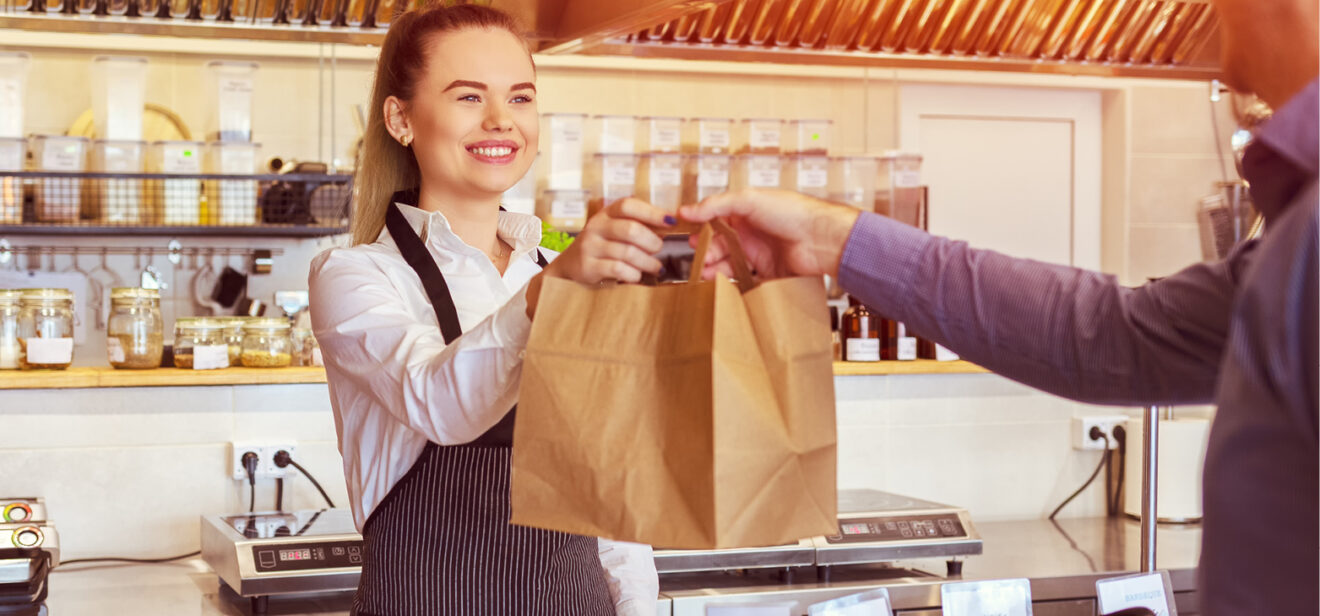This post is sponsored by TransAct.
Consumer demand for convenience is driving growth in off-premise foodservice, including grab-and-go. Almost six out of every 10 restaurant meals are consumed outside the restaurant, according to a 2019 report from the National Restaurant Association and Technomic. As busy consumers become more accustomed to buying food away from home when they don’t have time to cook, grab-and-go purchases are projected to further increase over the next decade, the Association predicted in its Restaurant Industry 2030 Report.
In addition to wanting fast, fresh meals they can take to-go, consumers have also shown interest in having those meals labeled with ingredient and nutrition information. In fact, 64% of consumers want nutrition information labels on packaged food in restaurants, according to a 2017 Reuters/Ipsos opinion poll.
Nutrition facts panels let consumers see at a glance how a packaged meal fits their dietary needs. A list of ingredients printed right on the package can also save customers and operators time in the store, and prevent potential order mix-ups if a customer is picking up meals for multiple people. For those with food allergies or sensitivities, a clear and accurate label can ensure they get the gluten-free bread they requested on their sandwich or the salad that is sans dairy. This increased level of transparency could also help spur impulse purchases if labeled grab-and-go meals catch a customer’s eye near the register.
New FDA requirements for nutrition fact panels attempt to make labels even simpler to understand. The new layout requires calories to be listed in a bolder typeface, callouts for added sugars and more accurate serving size information.
“FDA-compliant labels have a specific format to ensure all pertinent information is displayed,” said Rich Lopez, manager of field services engineers for restaurant technology company TransAct. Among the company’s software solutions is a labeling app that works in tandem with an ecosystem of other back-of-house programs.
“Since our solution is cloud-based, the template for FDA compliant labels can be uploaded to the terminals, ensuring any updates or changes are reflected immediately,” Lopez said. “These new formats can be created in advance of comply-by dates set by the FDA so the format can be switched on automatically for the changed dates.”
The new requirements took effect this year for manufacturers with $10 million or more in annual food sales, while manufacturers with less than $10 million in annual food sales will have until 2021.
In addition to offering transparency for customers, custom labels have myriad uses for back-of-house, Lopez said.
Labels can be used to keep track of food prep dates and monitor shelf life. An organized labeling system can help eateries practice “first-in, first-out” standards.
“If everything is clearly marked, you can see which product came in first and rotate stock accordingly, thus ensuring product doesn’t sit on your shelf and expire causing waste,” he said.
Printing labels on-demand also helps cut down on label waste, since operators won’t have a backstock of outdated labels. Lopez also pointed out that custom labels offer food safety advantages.
“If you add who prepped or handled an item to the label you can help pull contaminated product, should that cook fall ill,” he said.
To learn more about the benefits of labeling for grab-and-go foodservice and how TransAct’s labeling solution can work for your operation, download this infographic.
____________________________________________________________________________
If you enjoyed this article, sign up for Restaurant Innovation SmartBrief to get news like this in your inbox, or check out all of SmartBrief’s food and travel newsletters as we offer more than 30 newsletters covering the food and travel industries from restaurants, food retail and food manufacturing to business travel, the airline and hotel industries and gaming.
